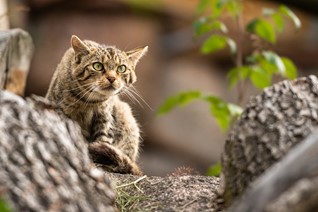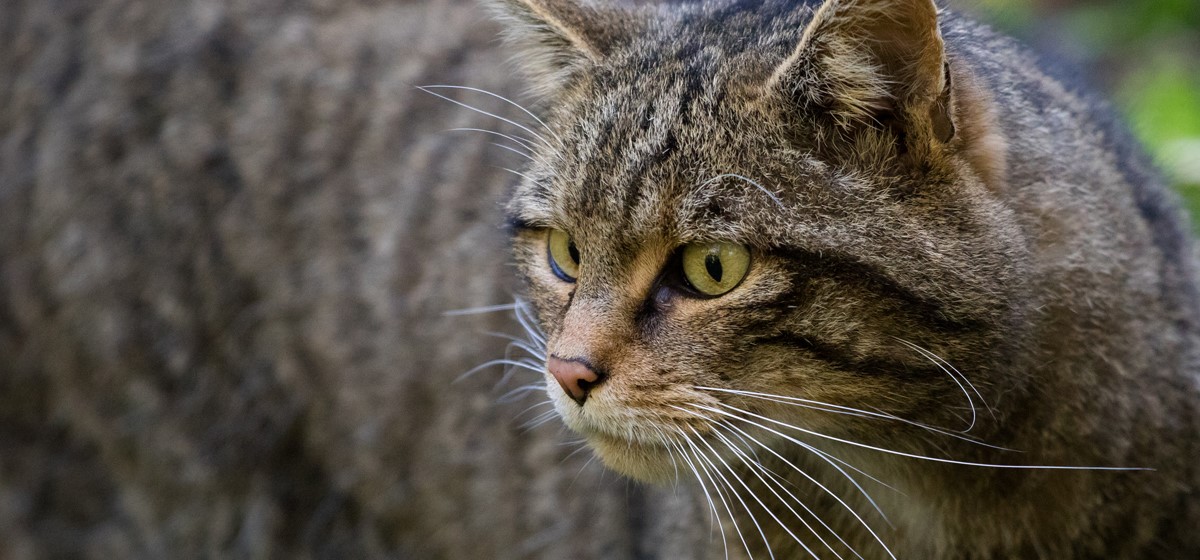The European wildcat in Scotland
The wildcat (Felis silvestris silvestris) is one of Britain's most endangered mammals and the species is on the verge of extinction in the country. The species was once common throughout the UK but today there are only about a hundred individuals left and all are found in Scotland. Historically, the wildcats have been threatened by the disappearance of their habitats and by human persecution, today they are mainly threatened by hybridization with domestic cats and diseases. This has led to a sharp decline in the wild population.
In 2019, the IUCN Cat Specialist Group stated in a report that the wildcat population in Scotland is no longer viable. The report also stated that in order to save the species in the wild, the remaining population must be strengthened by breeding and releasing wildcats. To re-establish the wild population of wildcats, the European collaborative project Saving Wildcats (#SWAforLife) was therefore launched. Saving Wildcat's goal is to prevent the extinction of wildcats in Scotland by breeding and releasing the species into the wild.

Scottish wildcat. © Pete Cairns
What we do at Nordens Ark
Saving Wildcats is a collaboration between the Zoological Society of Scotland (RZSS), Nordens Ark, Scottish Natural Heritage, the Cairngorms National Park Authority, Forestry and Land Scotland and Junta De Andalucía and the project is possible thanks to funding from EU-LIFE.
In order to produce a large number of wildcats for release, a unique breeding center has been built near Cairngorms National Park in Scotland. The breeding center is run by RZSS and consists of a number of breeding enclosures, a veterinary department and specially designed release enclosuress. To complement the Scottish breeding center and reduce vulnerability, Nordens Ark will also hold a number of breeding pairs of wildcats and produce young for the release project. A breeding pair will be in the public part of the park, but the main part of the work will take place in Nordens Ark's closed breeding facility. There we have built two large breeding enclosures in natural terrain where the wildcats will be able to prepare for a life in the wild.
Releasing species into the wild is complicated and there are no guarantees of success, but Saving Wildcats has brought together specialists from around the world with unique knowledge and expertise to give wildcats the best chance of survival in Scotland. In addition to working with the release of wildcats, the project will also work to reduce threats in the wild by, among other things, creating domestic cat-free zones and thus preventing further hybridization with domestic cats.
News from the project - March 2024
During the summer of 2023, 19 wild cats could be released into the Cairngorms National Park for the first time ever. All cats were fitted with GPS collars and thanks to hard work, it has been possible to follow them throughout the year. In early 2024, 18 of the cats were captured to replace the battery in the collars. At the same time, the cats underwent a health check which showed that they had put on weight and muscle, indicating that the cats had adapted to a life in the wild.
During February 2024, the project's third breeding season began in Scotland and the breeding pairs are already showing different mating behaviours. Two pairs are new compared to the previous year to increase the genetic variation in the release population. The kittens born during the year will hopefully be released in 2025. The 11 kittens born in 2023 are now in a so-called pre-release enclosure in preparation for release into the wild in the summer of 2024.
At Nordens Ark, we are building a new breeding pen in the public park. Here, a genetically important breeding pair will move in later in 2024.
Read more about the project on https://savingwildcats.org.uk/
In cooperation with
Royal Zoological Society of Scotland, Scottish Natural Heritage, the Cairngorms National Park Authority, Forestry and Land Scotland and Junta De Andalucía












